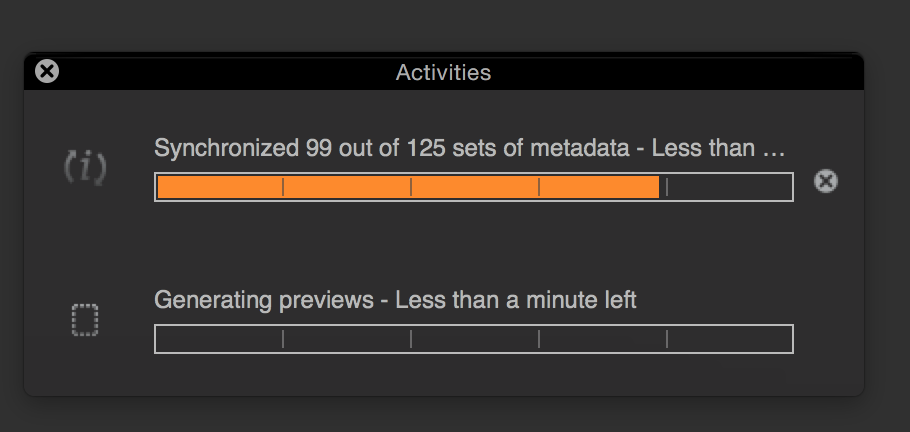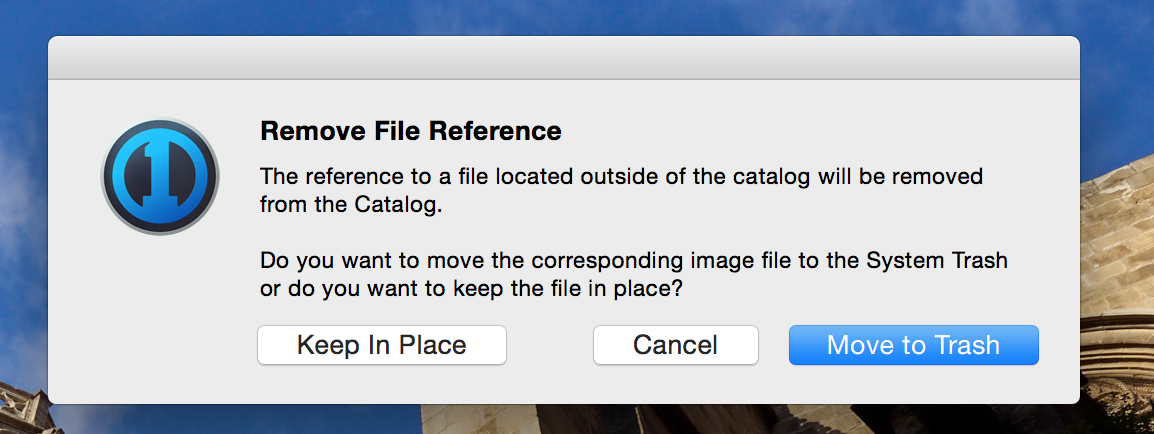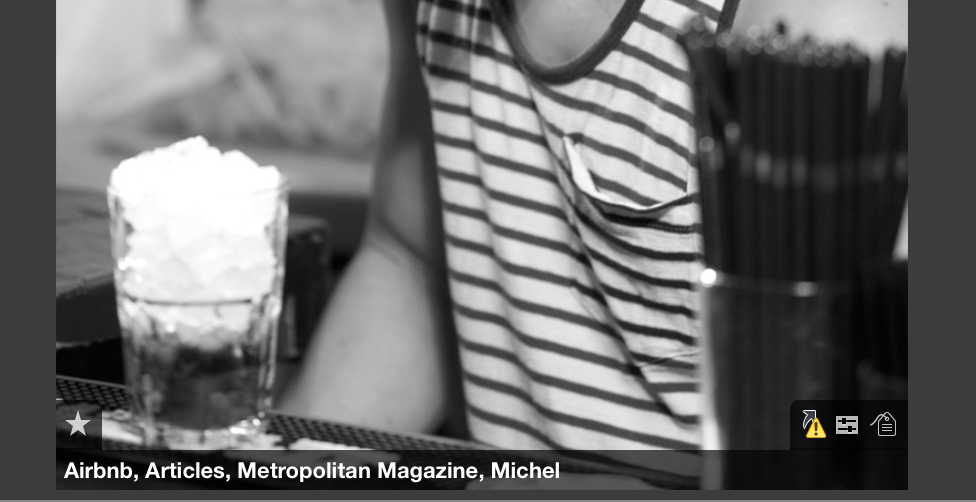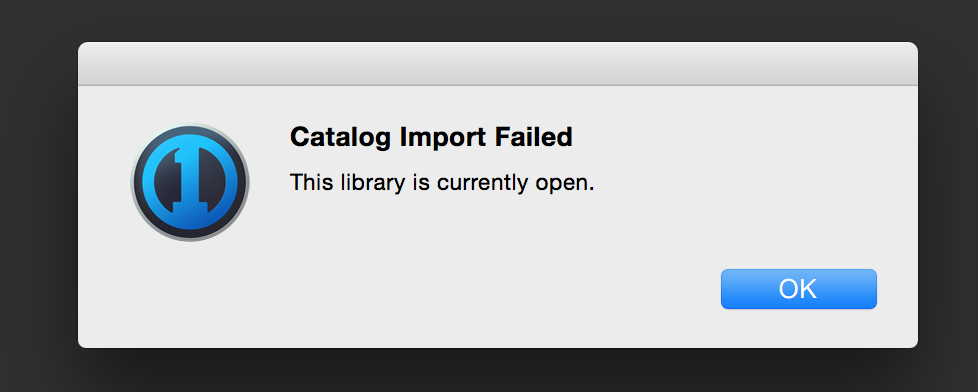Using Aperture Libraries in Capture One Pro 8
I recently wrote a blog entry on my getting to grips with Capture One Pro 8 after realising that the replacement For Apple’s Aperture (Photos.app) might prove to be wanting in too many areas to make it a viable choice for more advanced users.
I mentioned in passing that one thing that led me to Capture One Pro was that using Aperture Libraries seemed to be a fairly painless experience (compared to some reports regarding doing the same in Lightroom) and this, plus a desire to avoid defaulting to Adobe and Lightroom, made me download the trial version and give it a whirl.
I was invited to expand on this here, so here is what I have learnt; Capture One Pro seems really keen to get Aperture users onboard.
I must add a disclaimer here that I am new to Capture One Pro 8 and may not have covered every possible angle when experimenting with it, so don’t do anything crazy without backing up first; I recommend duplicating relevant files and play with them, whilst you get the hang of it.
When you open Capture One Pro you can go to the Edit menu and choose open Catalog, you then get the option to import a variety of them. (Remember that Library and Catalog are pretty much the same thing, but try and get used to thinking of Catalogues from now on).
You may or may not get a dialogue box depending on whether there are issues with the Library, this stems from Capture One Pro being rather clever (sometimes to a fault) when dealing with Aperture Libraries, it may notify you of “off-line” images, etc.; this could mean your Library has images referenced elsewhere (hard drives not connected) or, as I discovered, a preview that has no original RAW file (because I had deleted it earlier as part of an experiment).
Once it is in Capture One Pro you may find the Library/Catalog is contained within some folders that mimic the old file structure that was in Aperture (I got this because I exported a Project as a new Library and it remembered the original hierarchy).
This is not a big deal but if you want to keep using the Library in Aperture maybe it is best not to move the Project out and erase the enclosing folders just yet; I did do this and it did not seem to cause a problem, but there maybe too many variables than I have not tried before I can say this is a safe option.
If you had any Albums within your Project these also appear intact (though not Smart Albums).
There will then appear a background task bar, which does not affect you using the program:
 Background activity window showing all is well, hopefully
Background activity window showing all is well, hopefully
What will be comforting to many is that though Capture One Pro uses the word Catalog for what we think of as Libraries in Aperture, it does still use Projects and even has an identical icon as well, you can pretty much do with this what are you are used to doing in Aperture, having Albums etc. There are even Folders, but alas they are called Groups!
One minor caveat regarding Capture One Pro Projects to remember for the future (if you start creating them) is that you cannot put files directly into them; there needs to be an Album there first, this does not bother me as I always tended to create Albums in Aperture anyway.
So now you have your Aperture Library/Catalog in Capture One Pro. What could possibly go wrong?
Well not too much actually, It does a great job bringing in Keywords, Labels, Star-Ratings and all the usual EXIF etc, you may find that there are some changes in colour, but quite frankly this could be for the best, as I have discovered. As far as I can tell Crop and Rotation gets carried over and remains editable as well. [Edit: I need to clarify that when accessing Aperture libraries you are accessing the files in their original format, and Capture One will do its best to copy your adjustments, which will then be editable in Capture One's equivalent tools; your RAW files stay as RAW files and you can then choose to either keep, refine, or even remove the Capture One adjustments and start afresh. Personally I found Capture One's interpretation of the original Aperture files to be at least as good as the original, but different cameras and even personal preferences will vary of course.]
I have experimented a little with editing images and seeing what happens back in Aperture, again there seems to be no problem, you can even erase from Capture One Pro without erasing the original as long as you choose the correct option in the pop up dialog box: Keep in Place. If you choose Move to Trash, that is indeed where you will find it (OS X Trash):
 It is fairly safe to erase the RAW files in Capture One Pro, without erasing them from the original Aperture Library, just don’t hit ‘Move to Trash’
It is fairly safe to erase the RAW files in Capture One Pro, without erasing them from the original Aperture Library, just don’t hit ‘Move to Trash’
If you then open the Library in Aperture you will see a preview with the Yellow Warning Triangle telling you the original is missing:
 The yellow warning triangle in Aperture that means the original RAW file is missing
The yellow warning triangle in Aperture that means the original RAW file is missing
Common sense would dictate that once you have imported an Aperture Library into Capture One Pro you should avoid working on it in Aperture, because things might get complicated, for instance, I have not found a way to get Capture One Pro to easily update/synch a Catalog with changes later made in the original Library (in Aperture) after it has been imported.
I even tried deleting the Catalog from Capture One Pro entirely and re-importing but Capture One Pro, as I said above, can sometimes be quite clever and it pops up a dialog box saying:
 It won’t let you import a duplicate Library easily
It won’t let you import a duplicate Library easily
This is, obviously because the Library is still open in Aperture.
So to round off I have to say that Capture One Pro has offered a real life-line to Aperture users who want to keep all of the info stored in their Libraries, without a lot of pain or grief and after managing to do that well, this is when the fun really begins as you get to see how incredible (and at times a little daunting) it is to use.
More like this
- Tip
- Tip
- Tip
- Store
- Tip

Comments
on March 11, 2015 - 10:05pm
These postings are great! I intend to convert over to Capture One Pro and this info gives really good insight into any potential hiccups in the process. Looking forward to reading & learning more on Capture One.
on March 12, 2015 - 7:58pm
I need to clarify that when accessing Aperture libraries you are accessing the files in their original format and C1 will do its best to copy your adjustments, these will then be editable in C1s equivalent tools; your RAW files stay as RAW files and you can then choose to either keep, refine, or even remove the C1 adjustments and start afresh. Personally I found C1s interpretation of the original Aperture ones to be at least as good as the original, but different cameras and even personal preferences will vary of course.
Lee Harris, professional photographer based in Barcelona, Spain.
www.leeharris.eu
www.leeharrisphoto.com
on March 12, 2015 - 6:23am
It is important to note that C1 views Aperture libraries as referenced files. The files stay in the aperture library while the adjustments are recorded in the catalog. I have not figured out a way to import a managed Aperture library into a Managed C1 catalog other than move them by dragging one by one.
on March 16, 2015 - 3:55pm
In the left sidebar under the Library panel, look for the Folders section. You will see a “Catalog” item and a list of one or more physical disk locations. The physical disk locations are the referenced locations. The “Catalog” location represents images “stored” inside the catalog package exactly like a managed Aperture library. You can move images between these using drag-and-drop.
To “store” images inside the catalog, select a physical disk location in the Folders section. Highlight all of the thumbnails you want to move into the catalog, and drag-and-drop them onto the Catalog label in the Folder area of the Library panel.
To move images from inside the catalog back to a referenced location, you do the opposite. The physical location must first be visible in the Folders section of the Library panel. You can use the “+” icon to add a physical folder to that area, then drag-and-drop images onto the folder where you want them to reside. This same method can be used also to reorganize referenced images on disk.
Photographer | https://www.walterrowe.com | https://instagram.com/walter.rowe.photo
on March 12, 2015 - 9:44am
Before I was importing my Aperture library, which was completely set up as “managed”, I let Aperture convert all my masters into a referenced folder structure.
That way I can be sure that no matter what happens with future OS X updates, I could at least access my RAW files and have them read by different applications (not every tool out there has the comfortable option to just reference a managed Aperture library like it was a normal folder structure, this is actually a pretty cool feature of C1).
Who knows when we will not be able to open Aperture anymore and easily get all our images out of the package file. Aperture has pretty comprehensive options to build a folder structure for your masters and I wanted to take advantage of this as long as everything works smoothly.
on March 12, 2015 - 4:54pm
Thats a potentially very useful option, especially if it is backward compatible with libraries already created. C1 has a normal file structure which is convenient but obviously you need to be careful if you change anything in the finder, you can synchronise files if this happens.
I have heard a C1 representative say that your Aperture Libraries should always work with C1as long as Apple does not decide to throw a spanner into the works! As long as they do not cripple them in some way it should be possible to always have access without having to reformat etc.
Lee Harris, professional photographer based in Barcelona, Spain.
www.leeharris.eu
www.leeharrisphoto.com
on March 12, 2015 - 4:30pm
MikeA,
How did you convert your photos from a “managed” library to “referenced”? I’m unable to find how to do that in the Aperture help.
on March 12, 2015 - 7:02pm
There’s a menu item called “Relocate Originals”. Select the masters you want to move out of your library and you can select in the window that comes up, where they should be placed and what kind of folders Aperture should generate in the Finder for you. It can read the date out of the EXIF data and set up a folder structure accordingly.
on March 12, 2015 - 4:39pm
I personally never used referenced files, but I am guessing you use the relocate option in the file menu to put them somewhere outside of the Aperture Library?
Lee Harris, professional photographer based in Barcelona, Spain.
www.leeharris.eu
www.leeharrisphoto.com
on March 13, 2015 - 12:06pm
Watched the webinar and downloaded the trial, although hadn’t much time to play with …
A big problem seems to be at least for me, that C1 imports only either the RAW or the JPEG from the Aperture Library, depending which one you’ve selected as the master in Aperture.
Furthermore, there is no handling of RAW + JPEG pairs inside of C1, when importing new stuff from a card. You can hide either format, but this seems to be global for all pictures.
My preferred workflow since I’ve switched to an Olympus OMD E-M1, which produces really good JPEGs, is to shoot in RAW + JPEG, use the JPEGs as master on import and switch to RAW only for pictures, where developing the RAW gives me significantly better results (i.e. blown highlights) or for pictures I plan to print big. Thus I need to favor RAW or JPEG on a picture by picture basis.
on March 13, 2015 - 12:56pm
I guess you could do 2 imports, have 2 albums within a Project for each format…
I also sometimes use jpegs for certain jobs, but have not yet tried working with them in C1 and I also use a EM-1 and completely agree that the jpegs are superb quality.
Lee Harris, professional photographer based in Barcelona, Spain.
www.leeharris.eu
www.leeharrisphoto.com
on March 13, 2015 - 3:19pm
After playing a bit with different adjustments it seems, that JPEGs are second class citizens in the C1 universe. A lot of adjustments only work with RAWs. In Aperture you actually have to look at the badges to realize you are working on a JPEG and not on RAW. The adjustments work almost identical and even transfer over, when you switch between RAW and JPEG.
Probably Phase One assumes, you will do heavy editing only on RAWs, and that may be the reason, why there is no RAW + JPEG workflow in C1.
On the other hand, with the limited editing features on JPEGs, you have even more often the need to switch to the RAW to do your edits and that is a bit cumbersome, if there is no link between the RAW and JPEG within the C1 database.
on March 13, 2015 - 4:21pm
Interesting Pete. What are your thoughts on importing over from Aperture. do you think it would be better to switch over to RAW in any RAW+JPEG setup so capture one has a better chance with initial adjustments transfer?
on March 13, 2015 - 9:00pm
If I didn’t miss something, with the current Aperture importer you bring over only either the RAW or the JPEG. Maybe you can switch over your master in Aperture and do a second import to bring over both but I’m not sure, that will work.
So yes, either you switch over to RAW for any RAW+JPEG pairs before you do the import or you say, the (out of camera) JPEGs, that are currently the masters in Aperture are fine otherwise I would had already chosen the RAW and bring over those JPEGs into C1. Chances are good you haven’t done any adjustments aside of straightening and cropping, thus C1 has no reason to apply its own adjustments.
on March 13, 2015 - 1:21pm
Hi Lee
Thanks for these insights. Has definitely got me intrigued with CP1
Having watch the CP1 tutorial on Aperture import I understand that basic adjustments are exactly replicated e.g. exposure, saturation right down to the same slider adjustment appearing in CP1 as in Aperture. My understanding is that for other adjustments these are approximated (with any differences tending towards being for the better with CP1 conversion) although not an exact match due to different colour engines in each app. Does that mean Curves adjustments I have made in Aperture also get transitioned across in an approximation? If so, am I right in assuming that while the changes you have made will come across if you open the curves adjustment dialogue in CP1 it will be at shown a default position rather than displaying the same curve adjustment as you left it in Aperture e.g. a classic ‘s’ curve.
Cheers
Ross
on March 13, 2015 - 1:46pm
I would not expect too much from the conversion of your Aperture adjustments. It’s just some sort of a starting point, so that most pictures in your catalog will have SOME kind of treatment instead of nothing at all.
The C1 RAW engine is just different and in many ways much more advanced than what you could do in Aperture. I made the experience so far, that for my best pictures I actually want to re-do them with C1 anyway by resetting all the sliders to zero and start from scratch. That way I already re-discovered some of my older work in a completely new light, which offsets any disadvantages C1 may have in terms of file and asset management.
on March 13, 2015 - 2:00pm
Thanks Mike, that clarifies it better for me and tempers my expectations better while still being excited about CP1 possibilities. It’s cool that you can keep Aperture adjustments for now, always be able to access them exactly as they were through Photos, yet also be able to open all of them in CP1 and take your fancy on when you want to revisit the past, while also moving forward with the future. And all this without taking up too much extra space, perhaps deleting previews in Aperture if you made use of that a lot.
on March 13, 2015 - 2:16pm
I have a new post in the works that touches on some of these issues, I ended up doing some tests to include in it as examples, I'll try couple of others as well now and incorporate them as well.
Lee Harris, professional photographer based in Barcelona, Spain.
www.leeharris.eu
www.leeharrisphoto.com
on March 13, 2015 - 2:32pm
Thanks Lee, sounds interesting and looking fwd to the post.
on March 13, 2015 - 9:05pm
Found another problem with C1. It seems there are no album picks for stacks. You can choose your favorite within a stack but that will become the pick everywhere you use that stack.
I extensively create new versions in Aperture, i.e. 4:3 and 16:9 aspect ratio for display on iPad or TV etc. The stacks are placed in several albums but with different album picks. I’ve learned that trick from Robert Boyer in his great Aperture 3 Organization book. Excellent time safer, if you use your pictures for different purposes.
It seems stacks in C1 are just “play with versions and choose the best one”, which is a poor usage of stacks.
And finally scrolling at 100% view in Aperture is lightyears faster than in C1 even with OpenCL acceleration enabled. Feels like you step back 2 generations in hardware.
I’ll stick with Aperture for now, there are too much compromises currently with the alternatives. Given my trusty 2010 Hexacore Mac Pro might not do well with any post Yosemite OS, I’ll probably stick with Aperture for even a bit longer.
Who knows whether Apple is then still selling computers - or just watches and cars. :-/
on March 14, 2015 - 10:57pm
I have been unsuccessful with importing my 25,567 photo Aperture Library into Capture One. While a good deal of the Library does import, not all does and Capture One self closes (shuts down). This been duplicated many times with fresh copies of Capture One and reports going to Capture One. Their support has requested several tests with logs and txt files being uploaded. No solution so far. I am wondering if anyone else has had a similar problem. Certainly the size of my library cannot be the issue. Operating system is up to date. The iMac is Retina 5K late 2014 i7 with 32GB. Using the portion of the Library that is imported seems to be ok, but the C1 program is of concern, often requiring a force quit when a normal closing should work. Until I can work out the problem, I am not comfortable doing very much with otherwise looks like a fine solution, especially as a Fuji shooter. Any suggestions welcome.
Thanks,
Roger
on March 15, 2015 - 6:58pm
Just a quick reply.
I have yet to try importing my very large library (about 7 years of work; I keep the current year on my laptop hard drive, because it is the working one) and I actually doubt I will, as I created it in Aperture from other libraries over the years, because it was more convenient to search for things that way, it is however slow and has also been problematic at times.
I will keep Aperture going until the bitter end for this library, and then probably export it out in the yearly sections I have it formatted in. The thing with C1 is that you can then import these sections into a new Library/Catalog and have a contiguous structure like before which is easily searchable.
I suggest splitting your Libraries up and importing the sections to see if perhaps it's a corruption of some kind in one of them, maybe run the repair protocol as well.
Lee Harris, professional photographer based in Barcelona, Spain.
www.leeharris.eu
www.leeharrisphoto.com
on March 16, 2015 - 8:25am
I too had huge problems with my first try at importing my Aperture library (about 27.000 images, 425 Gig). It did convert without crashing or locking up, but all the star ratings were gone, it introduced some odd color tags (which were not present in my Aperture library), in short it messed up a lot of the basic metadata from the database.
I found out that if I import a single project (exported as a library from Aperture first) it did not have any problems and everything was there as expected. So what I did was throw away that first C1 catalog and separate my Aperture library in smaller chunks, meaning that I exported every one of my about five Top Folders as a library and imported them one by one into a fresh new C1 catalog. That way everything went well. It seems the bigger the library, the more trouble the importer has.
This whole exercise once again showed me, how flexible and solid Aperture is when it comes to handling all the assets in the database. Exporting libraries, switching 27.000 images over to referenced instead of managed, in a folder structure that I chose before, all went extremely smooth and rock solid. And all that with absolutely zero performance issues compared to C1, which shows me spinning beachballs all the time. Phase One would be wise to have a hard look at what Apple did different with their SQL database.
on March 15, 2015 - 3:48pm
Roger,
I to have encountered the very same problem as you. I am working with the trial copy of C1. My main Aperture library has ~56,000 photos. I have tried importing it, as per the instructions on the hour long webinar posted by C1, 2X with no success. The import seems to work fine until it hits ~27, 000 photos, then additional photos stop being imported although to program continues to READ all 56,000 pics to the end. When it finishes, I view the structure of the library and on the surface it looks to be all there. However, none of my pictures from the last several years (~18-19,000 pics) are in their projects +/or albums; just the library structure is there. No photos. Prior to that period of time, all seems to be intact and OK. When I close the program and try to re-open the Catalog that I just imported to; it won’t respond (the dreaded beachball of death appears) and I have to force quit C1. But here’s the thing; I have SUCCESSFULLY imported 2 much smaller (198 & 2112 photos ) Aperture Libraries with no problems what so ever. Everything in those much smaller libraries is intact in almost the same form as they were in the Aperture Library (adjustments, keywords, metadata, crops, etc.). It’s as if C1 can’t handle and is choking on the large volume Aperture libraries.
Do you have the trial version or did you purchase the program? How responsive does C1’s support appear to be?
I like C1 better than LR. IMO it has better RAW conversion and noise control than both Aperture and LR (I’ve compared SOOC shots in all three programs); I love their localized color module. I’m not a computer guru by any means but I think their Aperture import module is not finished. It’s still like the guy in the webinar said - “still a little bit of a beater”.
I hope they can get this straightened out. I really don’t want to have to go to LR. I’m also concerned of any other start-ups for the very same reason that I’m in this position now – the program for one reason or another goes belly-up ( who thought Apple would abandon us? ). Any thoughts or help would be appreciated.
on March 15, 2015 - 6:04pm
Thanks, John, I appreciate knowing it’s not just me. My results mirror yours. I am also working with a trial version. Support has been consistent, but only in asking me to furnish special reports which are generated within C1. After several of such sessions, the last response was a thank you, “we are turning your results over to R&D”. While the Aperture transfer will be great once working properly, for the moment I am concerned that C1 in general is perhaps not ready for my iMac. The possibility that it is not just the Aperture Import Routine is a question. For those who have not had issues, the comments are very positive, so there is hope, but for now, I think I will continue with Aperture, and hope that PhaseOne will grant another trial in the future. By the way, when C1 crashes, there is also a report generated for sending to Apple. I have done that and also uploaded the Apple report to C1 support.
on March 16, 2015 - 4:35pm
Have you tried exporting your Aperture library into a new library, and seeing if C1P successfully imports that? I had initial issues with both C1P and Lightroom importing my master Aperture library (50,905 items). After exporting it to a new library, both apps were able to import the exported copy. This to me says there is some cruft in the original copy that neither app handles well.
Everyone who is migrating to something new needs to have a reliable way of confirming that images and data made it into what ever target cataloging system they choose. After I imported my Aperture library into both Lightroom and C1P catalogs, the counts for rating, label and file types differed in both Lightroom and C1P from my Aperture library.
Photographer | https://www.walterrowe.com | https://instagram.com/walter.rowe.photo
on March 16, 2015 - 7:03pm
Thanks Walter,
I will try the export to a new library.
on March 15, 2015 - 8:20pm
Roger,
Thank you for responding to my post. Some more info on my setup. I have been using managed library(s) since Aperture 1.0. I use a mid 2012 Retina MacBook Pro with an Apple monitor. My libraries and backup vaults (2) reside on external thunderbolt LaCie hard drives.
I have a couple of questions for you:
1. How did you contact C1 support? I certainly want to contact them also. The more complaints from former Aperture users who want to become C1 users the better.
2. Did they say whether the trial version has anything to do with the problems as opposed the licensed ($) version?
on March 16, 2015 - 7:15pm
Contact with C1 supports was through the Help Tab in the C1 program which brings you to a PhaseOne website where an support issue can be made. C1 will provide a number and all back and forth communications are through that case number on their support site. It’s well done. Their response to my last posting of log files was:Hi Roger,
Thanks for the sample, I will pass onto R&D and keep you posted.
Best,
Jon
Phase One support
I did not ask about the trial vs paid version, but I doubt it has any effect.
on March 16, 2015 - 8:25am
This is very interesting. I haven’t tried C1 yet; my only other experience is with Lightroom, and after switching exclusively to it for a 6 month trial, I just wasn’t happy in it; while it has some great editing controls, it doesn’t suit my workflow, switching often between editing metadata and adjustments for batches of photos. The fact that Adobe’s importer can’t handle Aperture adjustments grates with me; I’d have to export every single photo as a jpg and import into Lightroom. That’s a nightmare.
If C1 can make a decent attempt at importing adjustments, allowing for some differences in Raw and colour engines, that makes a huge difference. A lot of things should be the same, things like levels and curves are standard, as are the colour spaces. Figuring out how you convert vignettes, sharpening, etc, should be quite doable. It’s the differences in capability that can make the difference, for instance can C1 import brushed adjustments? In Aperture, they are simple greyscale masks, so provided C1 supports bitmap masking of adjustments, that ought to carry across too.
I was really surprised that Adobe wasn’t able to devise an importer that included adjustments, even with the caveat that there might be changes in implementation.
I still intend to use Aperture for a while yet, and since you can’t work on the same library, I will try it out on an older much smaller library first. I can envision that I might use it in conjunction with Photos, for Photobooks for instance, or syncing jpg versions across devices.